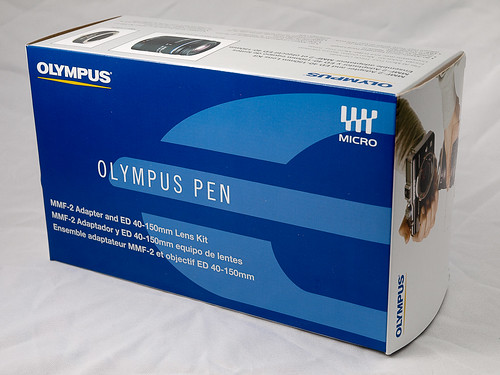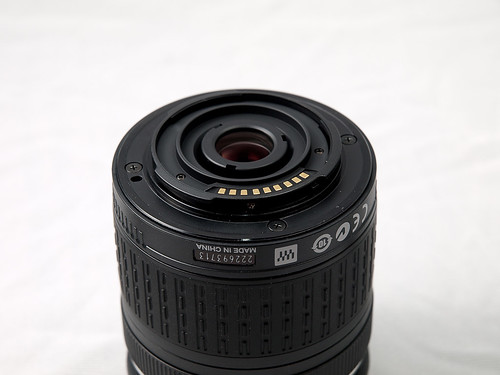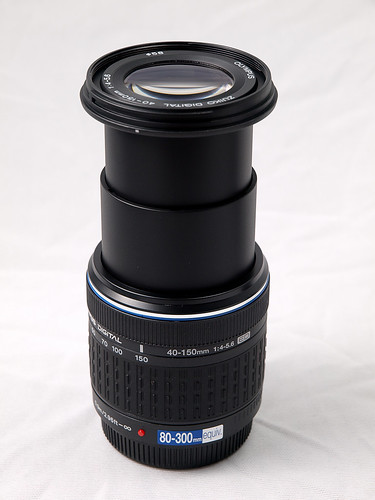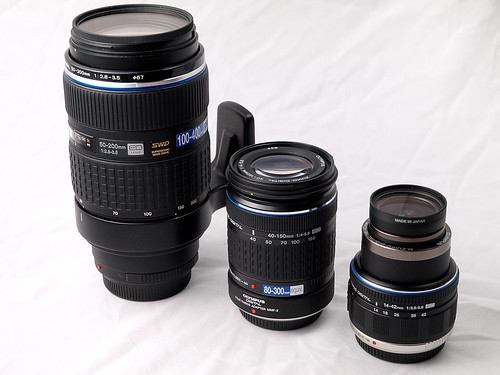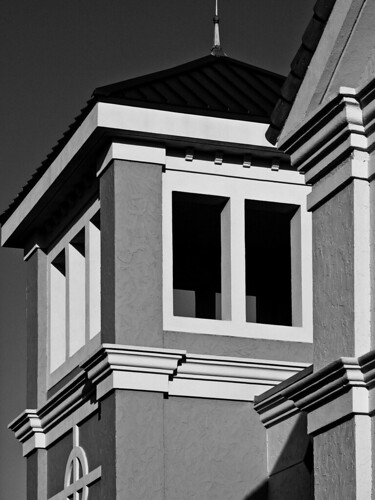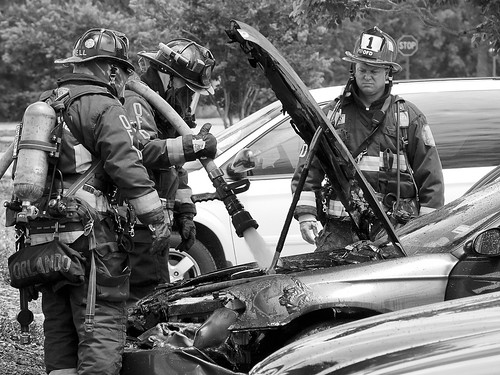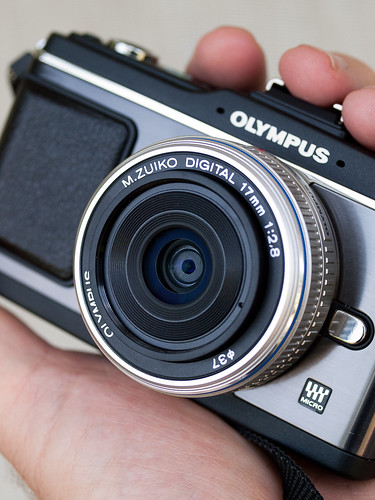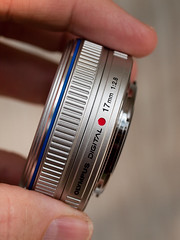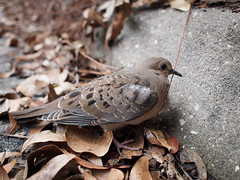
Concept: 3 out of 5
Execution: 3 out of 5
Yeah, but: Is this whole review just an excuse for camera bondage pr0n?
The Long Version: I've always been a bit particular - peculiar? - about how I carry my cameras. I almost always prefer wrist straps, finding it both easier and safer to hand-carry a camera and heavy lens instead of slinging it from a neck strap. And since most commercial wrist straps are either little stringy things with quick-releases for P/S digicams, or made with uber-wide webbing that looks like it wants to be a neoprene cuff bracelet, I've always wound up making them myself from various lengths of cord. They work well, but they look as cheap as they are.
Enter Gordy's Camera Straps.

Gordy's straps are hand-made of quarter-inch leather with waxed polyester binding, and there are four leather colours and ten choices of wrapping cord. If there's more than one piece of material involved, then the colours can be picked individually. There are two main attachment methods, either a string that won't wear down the camera's finish, or a split-ring ('lug') attachment that can use different types of camera-protecing 'bumpers'. The photo above shows the Integral bumper; there are both leather and rubber options that aren't built-in but provide more protection. There's also a tripod-mount attachment for a sling-style strap and a tripod-and-lug vertical attachment, which hangs the camera vertically and looks very cool for rangefinders with an offset tripod mount. Going through Gordy's web site is fun and easy.

The first strap I ordered is a black wrist strap with a black string attachment and red wrapping cord. The leather is fairly stiff right out of the envelope - worldwide shipping is included in the website's prices - but works in nicely. However, it's never going to be as supple as the attachment string, so that's where the flex and movement comes in. As I see it, there are two big advantages to the string: it can't damage the camera's finish, and it makes the strap very thin where it attaches to the camera. For bigger bodies with attachment lugs at the top, like Canon's SLRs and many Nikons, this doesn't matter much. For others, especially ones with smaller bodies and lower lugs, a thick strap will interfere with the grip of a normal human. Panasonic's GH1 almost falls into this camp, and the modern-classic Zeiss Ikon rangefinder is hopeless.

I've used my Ikon with the string wrist strap, but the absence of a protruding grip makes it hard to hand-carry for any length of time. So once I'd seen the quality of Gordy's work, I ordered a single split-ring neck strap with a nearly Zeiss-blue wrapping cord. I was really tempted by the lug-and-tripod vertical design, but since it wouldn't let the camera sit upright, I decided to pass on it no matter how appealing it might seem. The other concern that I had is related to the thickness of the leather at the attachment point, and as I suspected it's too much to let me attach the strap to the right side of the camera. Putting it on the left side solves that particular issue, with an added benefit as well. When I don't want to carry the Ikon over my neck or shoulder, I simply use the strap as a long tether to my right wrist. The rubber O-ring lets me snug it up nicely and makes it perfectly secure. I used to carry the GH1 the same way - on a long shoelace - simply because it keeps the wrist strap from falling across the viewfinder/LCD when I'm using the 'portrait' orientation. Since I still prefer to hand-carry the Ikon when I'm actively using it, the single attachment point absolutely perfect.

Despite the name, I'll almost never put a neck strap around my neck. Our necks aren't really designed to carry heavy weights, and let's face it: a camera looks kind of foolish bouncing off of decidedly non-washboard abs. The moderately rough inner surface of the leather makes it too grippy to sling the camera diagonally, but in exchange the strap does stay where I put it reasonably well. When I'm working with a second camera - typically a digital one that's doing the scouting - my favourite way to carry the Ikon is from my left shoulder, and with the rubber o-ring stopper tightened up it's very secure. I can practically do a callisthenics routine with it carried that way, and when the camera does start to slip a bit, it's close at hand to re-snug.

The length of the straps isn't adjustable - except for one neck strap design - but it can be chosen either from a couple of options (wrist strap) or specified to whatever length you like (neck strap). I have the standard-sized wrist strap and a 45" neck strap, and have been happy with both. I have complete confidence in their strength, and had no problem letting my brand-new Zeiss Ikon dangle from my wrist when it came time to dig out a new roll of film. I will concede that I haven't been using them for very long - expect an update in a few months - but I'm much happier with them than any commercial strap that I've used. Gordy's straps may not have a Billingham-level fit and finish, but they don't have the Artisan and Artist price burden either. I'm a fan of the hand-crafted aesthetic, and really enjoy the personality that they bring to these machines.
There may even be a third one in my future.






